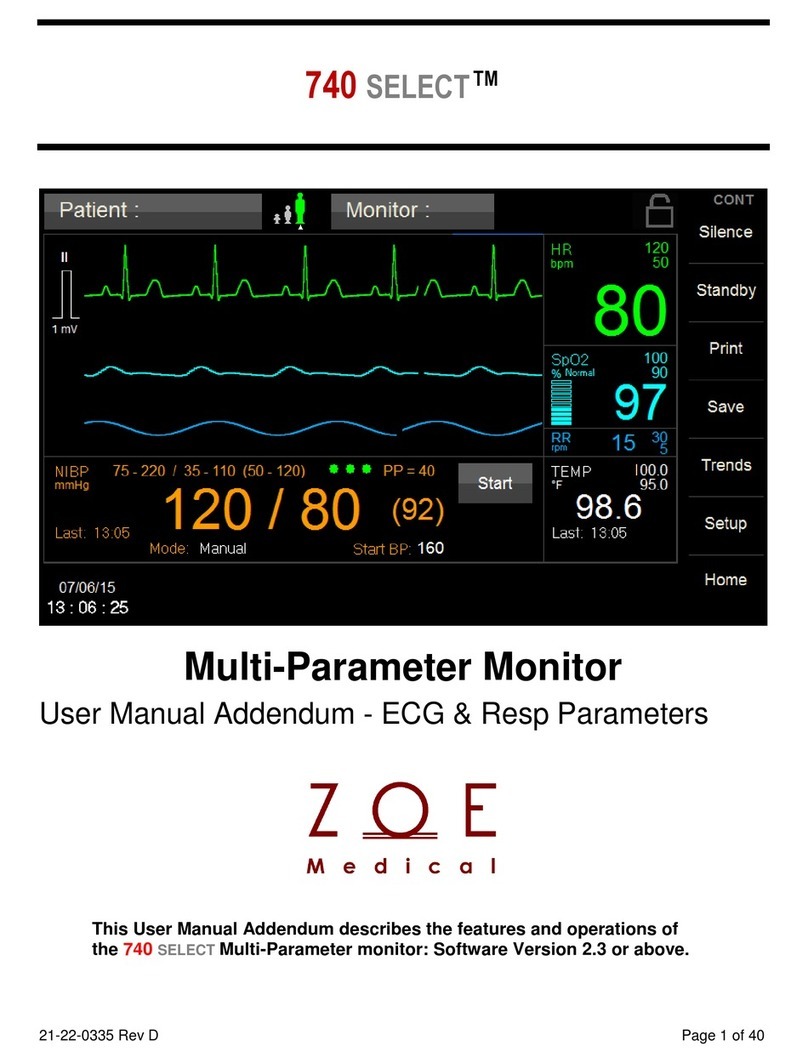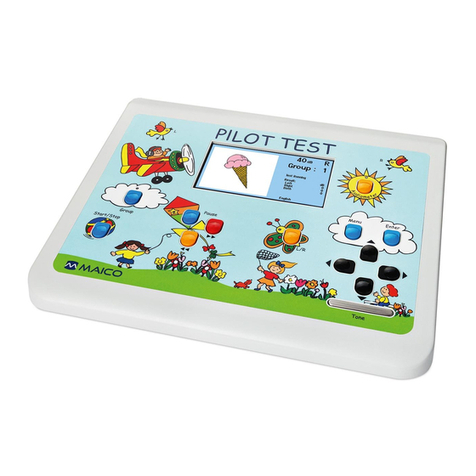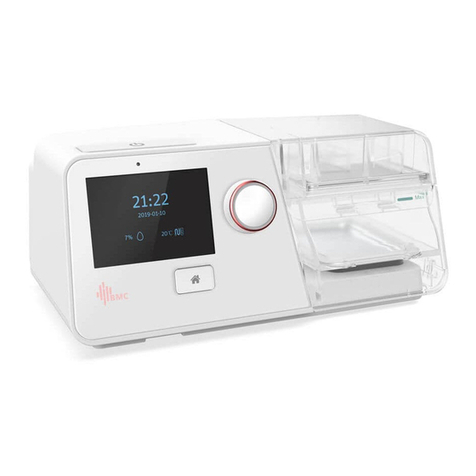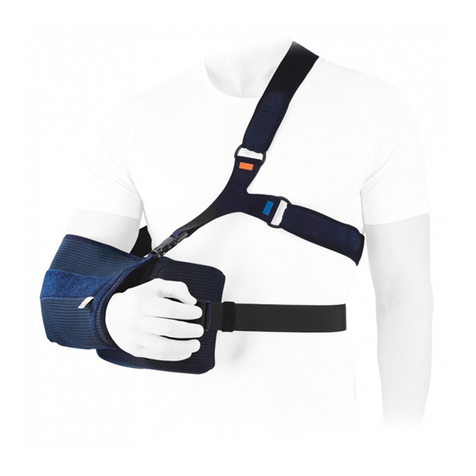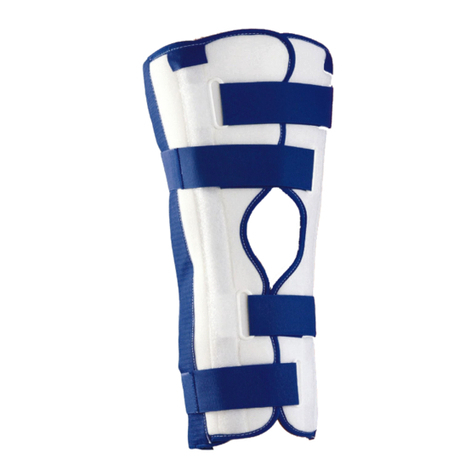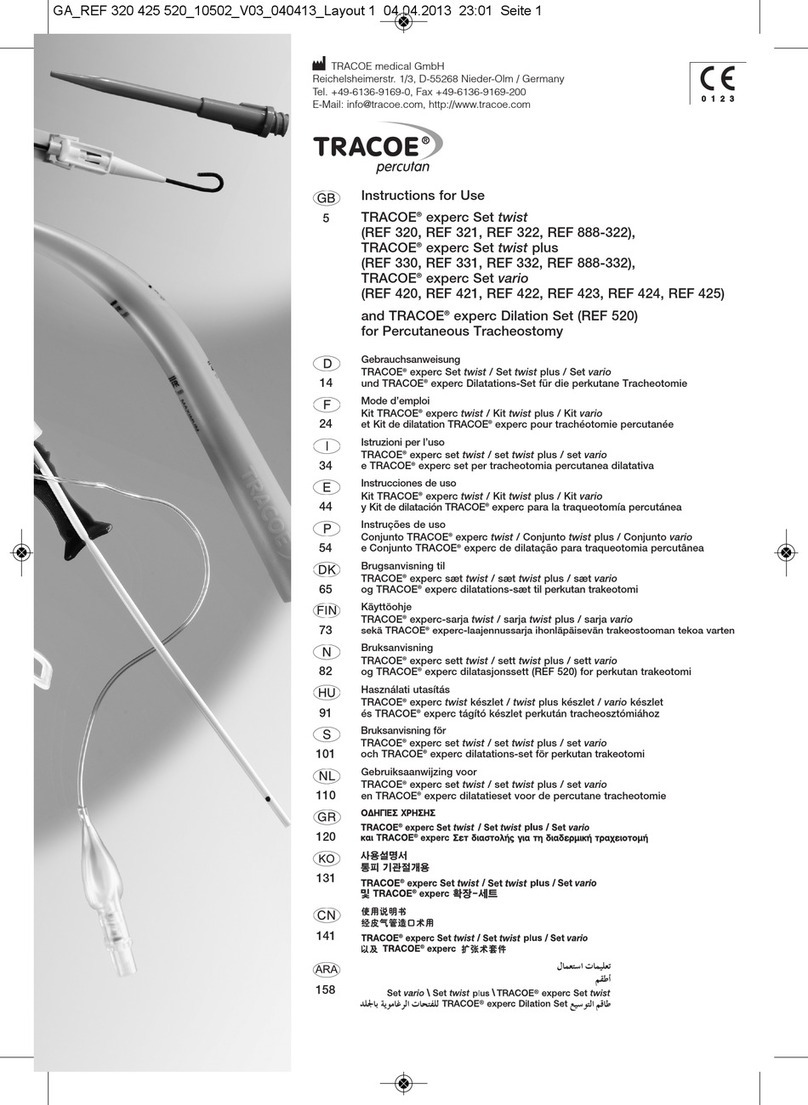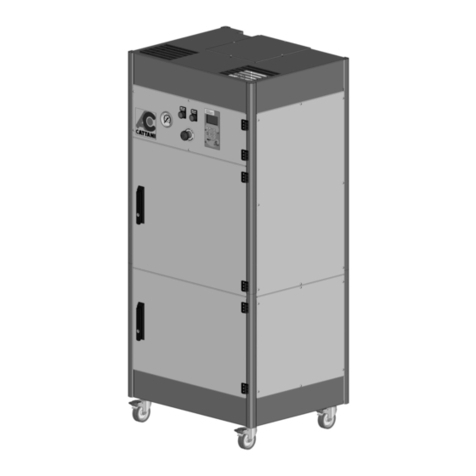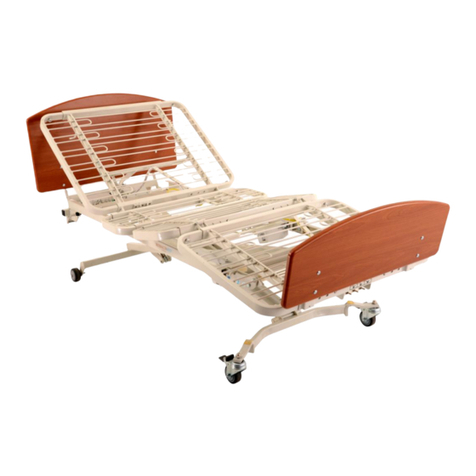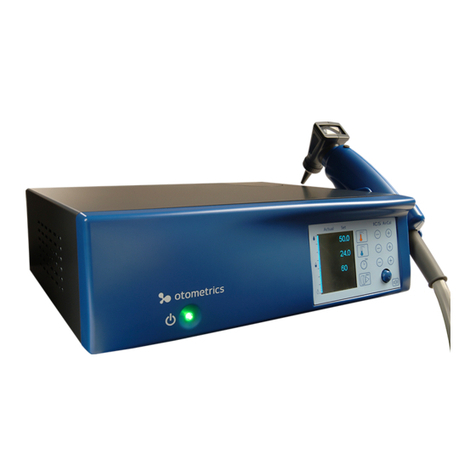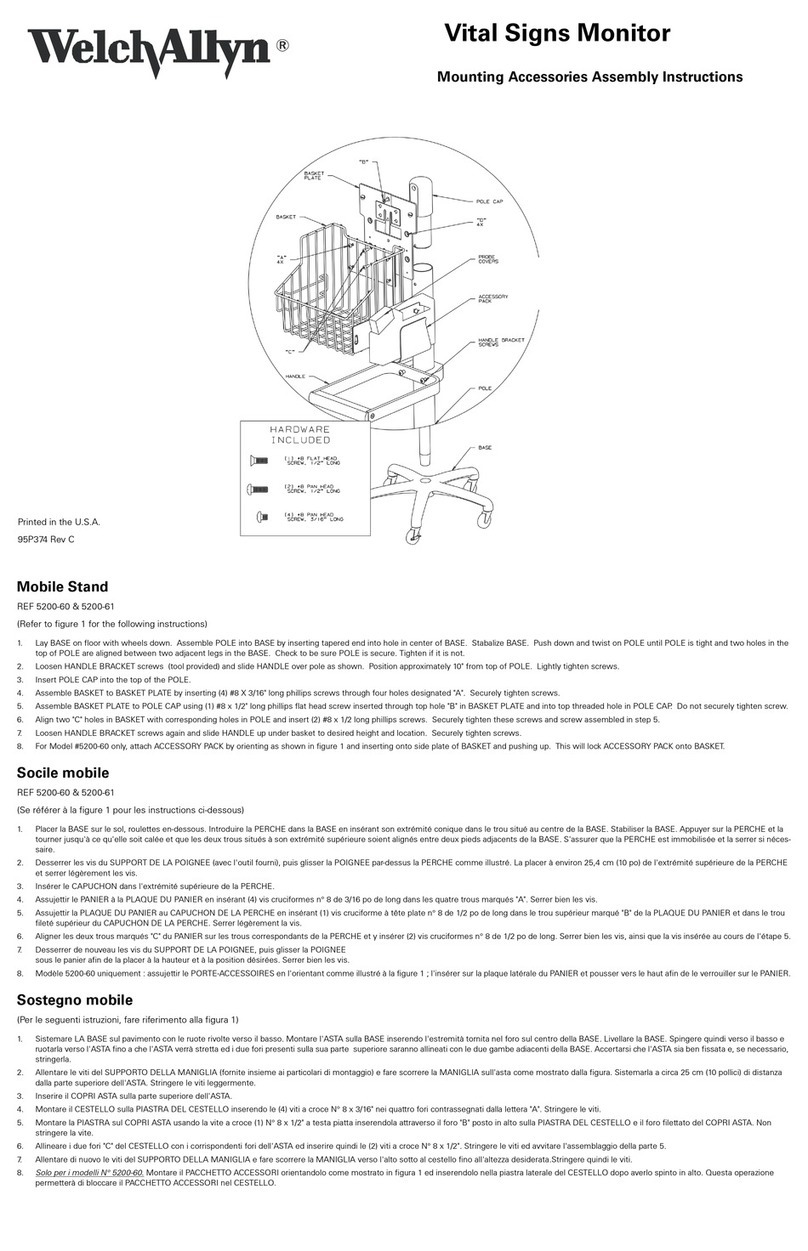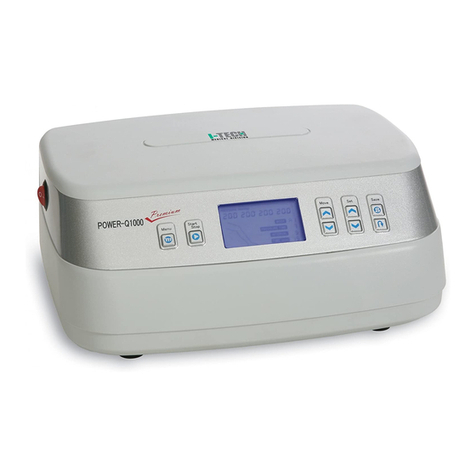ZOE PPM3 User manual

Nightingale Monitoring System
PPM3 User's Guide

ii Nightingale PPM3 User's Guide April 2019
Zoe Medical, Inc.
460 Boston Street
Topsfield, MA 01983
Nightingale Monitoring System PPM3 User's Guide
Part Number 122-0062, Revision C
©Zoe Medical 2005 - 2019 All rights reserved
Printed in the United States of America
EC Representative:
MedNet GmbH
Borkstrasse 10
48163 Muenster
Germany
Telephone +49 251 32266-26
Fax +49 251 32266-22
"Nightingale Monitoring System," "Nightingale MPC," "Nightingale PPM3,"
and "Personal Patient Monitor" are trademarks of Zoe Medical, Inc.
The information in this document is subject to change without notice.
This document contains proprietary information that is protected by
copyright. No part of this document may be reproduced in any manner, in
whole or in part (except for brief excerpts in reviews and scientific papers)
without the prior written consent of Zoe Medical.
Zoe Medical makes no warranty of any kind on this material, including but
not limited to, the implied warranties of merchantability and fitness for a
particular purpose. Zoe Medical shall not be liable for errors contained
herein or for incidental or consequential damages concerning the
furnishing, performance, or use of this material.
All Zoe Medical monitoring devices are intended for use only by qualified
medical personnel.
Before using any Zoe Medical monitoring device, be sure to read carefully
and understand all manuals provided with the device.
Caution: United States Federal law restricts this device to sale by or on
the order of a physician.

April 2019 Nightingale PPM3 User's Guide iii
User Assistance
If you have a question or need help operating the Nightingale PPM3, please
contact Zoe Medical Technical Support:
Email: [email protected]
Phone: (978) 887-4013
For the latest information about answers to frequently asked questions, please
consult our web site:
www.zoemedical.com


April 2019 Nightingale PPM3 User's Guide v
Table of Contents
Nightingale Monitoring System....................................................................i
PPM3 User's Guide.....................................................................................i
User Assistance.........................................................................................iii
General Information...................................................................................xi
1. Overview........................................................................................1-1
1.1. System Diagram......................................................................1-1
1.2. Scope of this User's Guide ......................................................1-2
1.3. PPM3 Diagrams ......................................................................1-3
1.4. PPM3 User Interface ...............................................................1-8
1.5. Main Features of the PPM3...................................................1-11
2. Getting Started ..............................................................................2-1
2.1. Parts you should have.............................................................2-1
2.2. Mounting solutions...................................................................2-2
2.3. How to Connect the PPM3 to Power and Communications.....2-3
2.3.1. Checklist before Connecting to Patient............................2-11
2.4. How to Connect the PPM3 to the Patient ..............................2-12
2.5. How to Check the PPM3 Setup............................................. 2-12
3. ECG and Heart Rate Monitoring....................................................3-1
3.1. Overview of ECG and Heart Rate Monitoring..........................3-1
3.2. Getting Started with ECG on the PPM3...................................3-1
3.3. Checking the ECG Signal........................................................3-2
3.4. Standard Electrode Placement (AHA) .....................................3-5
3.5. Standard Electrode Placement (IEC).......................................3-6
3.6. Electrode Placement for Paced Patients (AHA).......................3-7
3.7. Electrode Placement for Paced Patients (IEC)........................3-8
3.8. Verifying Proper Pacemaker Handling.....................................3-9
3.9. ECG and Heart Rate Monitoring Messages........................... 3-10
4. Respiration Monitoring...................................................................4-1
4.1. Overview of Respiration Monitoring.........................................4-1
4.2. Getting Started with Respiration on the PPM3 ........................4-1
4.3. Checking the Respiration Signal..............................................4-1
4.4. Pediatric Considerations..........................................................4-3
4.5. Respiration Monitoring Messages ...........................................4-4
5. Pulse Oximetry Monitoring.............................................................5-1
5.1. Overview of Pulse Oximetry Monitoring...................................5-1
5.2. Getting Started with Pulse Oximetry on the PPM3..................5-1
5.3. Checking the Pulse Oximetry Signal........................................5-2
5.4. Pediatric Considerations..........................................................5-4
5.5. Pulse Oximetry Monitoring Messages .....................................5-5

vi Nightingale PPM3 User's Guide April 2019
6. Non-Invasive Blood Pressure Monitoring.......................................6-1
6.1. Overview of NBP Monitoring....................................................6-1
6.2. Getting Started with NBP on the PPM3...................................6-1
6.3. Checking the NBP Measurement ............................................6-2
6.4. Pediatric Considerations..........................................................6-6
6.5. Hypertensive Considerations................................................... 6-6
6.6. NBP Monitoring Messages......................................................6-7
7. Oridion CO2Monitoring..................................................................7-1
7.1. Overview of CO2Monitoring ....................................................7-1
7.2. Getting Started with Oridion CO2on the PPM3 .......................7-1
7.3. Checking the CO2Signal.........................................................7-2
7.4. Integrated Pulmonary Index.....................................................7-3
7.5. Oridion CO2Monitoring Messages ..........................................7-7
8. Masimo CO2Monitoring................................................................. 8-1
8.1. Overview of CO2Monitoring ....................................................8-1
8.2. Getting Started with Masimo CO2on the PPM3 ......................8-2
8.3. Checking the CO2Signal.........................................................8-4
8.4. Masimo LED Indicator .............................................................8-5
8.5. Zeroing Masimo CO2 Modules.................................................8-5
8.6. Masimo CO2Monitoring Messages .......................................8-11
9. Invasive Blood Pressure Monitoring..............................................9-1
9.1. Overview of IBP Monitoring.....................................................9-1
9.2. Checking the IBP Signal(s)......................................................9-3
9.3. IBP Monitoring Messages........................................................9-5
10. Temperature Monitoring ..............................................................10-1
10.1. Checking the Temperature....................................................10-1
10.2. Temperature Monitoring Messages....................................... 10-3
11. Working With Menus ...................................................................11-1
11.1. Parameter Menus..................................................................11-2
11.1.1. ECG and Heart Rate........................................................11-2
11.1.2. Respiration ...................................................................... 11-4
11.1.3. Pulse Oximetry ................................................................ 11-5
11.1.4. Non-Invasive Blood Pressure ..........................................11-7
11.1.5. Oridion CO2 / Capnography .............................................11-9
11.1.6. Masimo CO2 / Capnography.......................................... 11-10
11.1.7. Invasive Blood Pressure................................................ 11-12
11.1.8. Temperature.................................................................. 11-13
11.2. Front Panel Keypad Menus.................................................11-14
11.2.1. SETUP Key and Submenus .......................................... 11-14
11.2.2. Password Protected Menus...........................................11-29
11.2.3. NBP INTERVAL Key......................................................11-35

April 2019 Nightingale PPM3 User's Guide vii
11.2.4. STANDBY Key...............................................................11-37
11.2.5. TRENDS Key.................................................................11-37
11.2.6. MAIN SCREEN Key....................................................... 11-37
12. Managing Alarms.........................................................................12-1
12.1. Alarm Presentation Basics.....................................................12-2
12.1.1. Audible Alarm Tones ....................................................... 12-2
12.1.2. Visual Alarm Colors......................................................... 12-2
12.1.3. How to Silence Alarms..................................................... 12-3
12.1.4. Alarm Messages..............................................................12-4
12.1.5. How to Enable or Disable Alarms.................................... 12-5
12.1.6. Alarm Validation............................................................... 12-6
12.1.7. Alarm Handling at Start-up ..............................................12-6
12.1.8. Alarm Reports..................................................................12-6
12.1.9. Audible Alarm Tones While Connected to the MPC ........ 12-7
12.1.10. Second Speaker Alarm Tones........................................12-8
12.2. Alarm Conditions ...................................................................12-9
12.3. What To Do When You Hear An Alarm Tone ......................12-15
12.4. Manual Self-test of the Alarm System.................................. 12-16
13. Centralized Monitoring................................................................. 13-1
13.1. Connecting to the MPC..........................................................13-1
13.2. Remote Control Settings........................................................13-2
13.3. Disconnecting from the MPC.................................................13-2
14. Viewing Trends............................................................................14-1
15. Entering Standby Mode...............................................................15-1
16. Battery Operation ........................................................................ 16-1
17. Strip Chart Recorder Option........................................................17-1
17.1. Basic Operation.....................................................................17-1
17.2. Recorder Settings..................................................................17-2
17.3. Strip Chart Recordings ..........................................................17-3
17.4. Trend Recordings..................................................................17-4
17.5. Recorder Messages...............................................................17-4
18. Troubleshooting........................................................................... 18-1
19. PPM3 Monitor Settings................................................................ 19-1
20. Accessories.................................................................................20-1
21. Cleaning ......................................................................................21-1
22. Maintenance and Storage............................................................22-1
22.1. PPM3 Functional Tests.......................................................... 22-1
22.2. PPM3 Calibration Procedures ............................................... 22-5
22.3. Battery Replacement.............................................................22-7
22.4. Storage..................................................................................22-7
22.5. Warranty................................................................................ 22-8

viii Nightingale PPM3 User's Guide April 2019
22.6. Password Control ..................................................................22-1
23. Disposal....................................................................................... 23-1
24. Technical Data............................................................................. 24-1

April 2019 Nightingale PPM3 User's Guide ix
Table of Figures
Figure 1. Nightingale Monitoring System.............................................1-1
Figure 2. PPM3 Front View..................................................................1-3
Figure 3. PPM3 Rear View ..................................................................1-4
Figure 4. PPM3 Left View....................................................................1-5
Figure 5. PPM3 Right View..................................................................1-6
Figure 6. Partially Engaged Power Connector.....................................1-7
Figure 7. Fully Engaged Power Connector..........................................1-7
Figure 8. PPM3 Front Panel ................................................................1-8
Figure 9. Sample of PPM3 Main Screen............................................1-10
Figure 10. PPM3 Startup Screen........................................................2-4
Figure 11. PPM3 Shutdown Screen....................................................2-5
Figure 12. New Patient Screen With Previous Patient........................2-9
Figure 13. Main Screen With No Patient Admitted............................2-10
Figure 14. ECG Waveform and HR Value ..........................................3-2
Figure 15. Standard AHA Electrode Placement..................................3-5
Figure 16. Standard IEC Electrode Placement...................................3-6
Figure 17. Paced AHA Electrode Placement......................................3-7
Figure 18. Paced IEC Electrode Placement........................................3-8
Figure 19. RR Waveform and Value...................................................4-2
Figure 20. SpO2Waveform and Value................................................5-2
Figure 21. NBP Value with Interval.....................................................6-2
Figure 22. Oridion CO2Waveform and Values...................................7-3
Figure 23. Integrated Pulmonary Index...............................................7-4
Figure 24. Masimo ISA Module With Nomoline ...................8-1
Figure 25. Masimo IRMA Module With Airway Adapter......................8-1
Figure 26. Nomoline Adpater ‒ Female Luer Lock .............................8-2
Figure 27. Snapping IRMA Onto Adapter ......................................8-3
Figure 28. Masimo CO2Waveform and Values..................................8-4
Figure 29. IBP Waveforms and Values...............................................9-3
Figure 30. TEMP Value.....................................................................10-1
Figure 31. Setup HR Menu............................................................... 11-2
Figure 32. HR/PR Values Sourced From SpO2 or ART ...................11-3
Figure 33. Setup RR Menu............................................................... 11-4
Figure 34. Setup SpO2Menu............................................................ 11-5
Figure 35. Setup NBP Menu............................................................. 11-7
Figure 36. Setup CO2Menu With Oridion Capnography................... 11-9
Figure 37. Setup CO2Menu With Masimo Capnography................ 11-10
Figure 38. Setup IBP Menu.............................................................11-12
Figure 39. Setup TEMP Menu ........................................................11-13

xNightingale PPM3 User's Guide April 2019
Figure 40. SETUP Key Menu.......................................................... 11-14
Figure 41. Main Screen With Alarms Paused Message & Timer.... 11-15
Figure 42. Setup Parameters Menu................................................ 11-16
Figure 43. Numbers Only Main Screen........................................... 11-17
Figure 44. Setup Waveforms Menu ................................................11-18
Figure 45. Setup Waveform Menu with IBPs..................................11-19
Figure 46. Setup Audio Menu......................................................... 11-20
Figure 47. Setup Alarms Menu –Screen 1.....................................11-21
Figure 48. Setup Alarms Menu –Screen 2.....................................11-23
Figure 49. Setup Alarms Menu –Screen 3.....................................11-24
Figure 50. Patient Information Menu............................................... 11-25
Figure 51. Adult Patient Type .........................................................11-25
Figure 52. Restore Department Defaults Menu ..............................11-26
Figure 53. Setup Administration Menu............................................ 11-27
Figure 54. Setup Configuration Menu............................................. 11-28
Figure 55. Enter Password Menu ................................................... 11-29
Figure 56. Setup Alarms Menu.......................................................11-30
Figure 57. Setup System Menu ......................................................11-32
Figure 58. Set Date and Time Menu............................................... 11-33
Figure 59. Save Department Defaults Menu...................................11-34
Figure 60. Setup NBP Interval Menu ..............................................11-35
Figure 61. Silenced & Active HR Limit Alarm....................................12-3
Figure 62. Trends Menu....................................................................14-2
Figure 63. Clear Trends Menu..........................................................14-3
Figure 64. Standby Menu.................................................................. 15-1
Figure 65. Standby Mode.................................................................. 15-2
Figure 66. Wakeup From Standby Mode.......................................... 15-2
Figure 67. Main Screen With Battery Icon ........................................16-1
Figure 68. PPM3 Recorder Connection............................................17-1
Figure 69. Replacing Recorder Paper ..............................................17-1
Figure 70. Setup Recorder Menu......................................................17-2

April 2019 Nightingale PPM3 User's Guide xi
General Information
This User's Guide provides healthcare professionals the information required for
the safe and effective use of the Nightingale PPM3 (Personal Patient Monitor, 3rd
Generation). The Nightingale PPM3 is a small, lightweight patient monitor
designed to acquire physiological waveforms and parameters, and to transmit this
data to a Nightingale MPC (Multi-patient Console).
For the sake of brevity, the term PPM3 is sometimes used in this document to
refer to the Nightingale PPM3.
The Nightingale MPC is the central monitoring station for the Nightingale
Monitoring System. The Nightingale MPC connects to a network of Nightingale
PPM3 bedside patient monitors, allowing you to view information from up to 64
patients at once.
For the sake of brevity, the term MPC is sometimes used in this document to refer
to the Nightingale MPC.
Before using the PPM3, be sure to read carefully and understand all the chapters
of this User's Guide. Failure to read and understand the instructions may lead to
misuse of the PPM3, which could result in harm to the patients.
Typographical Conventions in this User's Guide
This guide contains warnings, cautions, and notes to help call your attention to the
most important safety and operational aspects of the system. To help identify
these items when they occur in the text, they are shown using the following
typographical conventions:
WARNING –Statements that call attention to the possibility of injury,
death, or other serious adverse reactions associated with the use or
misuse of the device.
CAUTION –Statements that call attention to the possibility of a problem
with the device associated with its use or misuse. Such problems include
device malfunction, device failure, damage to the device or damage to
other property.
Note - Statements that provide supplemental information.

xii Nightingale PPM3 User's Guide April 2019
Indications for Use
The Zoe Medical Nightingale Monitoring System is indicated for use in adult &
pediatric patient populations.
The Zoe Medical Nightingale Monitoring System facilitates the monitoring of:
- ECG
- Impedance respiration
- Non-Invasive blood pressure
- Invasive blood pressure
- Body temperature
- Functional arterial oxygen saturation (SpO2)
- End-tidal & inspired CO2
The Zoe Medical Nightingale Monitoring System is a prescription device
intended to be used by healthcare professionals in all areas of a healthcare facility.
WARNING –The Nightingale PPM3 is not intended for use in the
following cases:
•Neonatal patients
•Apnea monitoring
•In an MRI environment
•Applications requiring automated arrhythmia detection
•Applications requiring diagnostic-quality ECG
WARNING –DEFIBRILLATION. To avoid the possibility of serious
injury or death during patient defibrillation, do not come into contact
with patient monitor or patient cables. Additionally, proper
placement of defibrillator paddles in relation to the ECG electrodes is
required to minimize harm to the patient. Only use accessories
approved by Zoe Medical for use with the Nightingale PPM3.
WARNING –PACEMAKER PATIENTS. Rate meters may continue to
count the pacemaker rate during occurrences of cardiac arrest or
some arrhythmias. Do not rely entirely upon heart rate meter alarms.
Keep pacemaker patients under close surveillance. See the
Technical Data chapter for disclosure of the pacemaker pulse
rejection capability of this instrument.

April 2019 Nightingale PPM3 User's Guide xiii
WARNING –ELECTROSURGERY. The Nightingale PPM3 is suitable
for use in the presence of electrosurgical (ESU) equipment. The
following precautions should be taken:
•To minimize the risk of patient burns, only use ESU equipment
that monitors the impedance of the ESU return wires.
•Users should be properly trained in the operation of the ESU
equipment.
•Keep patient-applied cables (e.g., ECG lead wires) off of earth
ground and away from the ESU knife and return wires to
prevent burns to measurement sites.
•To prevent burns to the patient in the event of a defective
neutral ECG electrode of the device, it is necessary to place
ECG electrodes far from the neutral electrode, and as
equidistant as possible from the blade-neutral axis of the
surgical patient monitor.
•When activating the ESU device, the ECG signals may be
distorted or may disappear, and Lead Fail or Noise alarms
might be present. The signal should return once the ESU
activation stops.
•When activating the device, using the SpO2 parameter as the
heart rate source rather than the ECG parameter to determine
heart rate may be clinically preferred.
•Only use accessories approved by Zoe Medical for use with
the Nightingale PPM3.
WARNING –FLAMMABLE ANESTHETICS. An explosion hazard
exists if the monitor is used in the presence of flammable
anesthetics.
WARNING –ANESTHESIA PATIENTS. Constant attention by a
qualified individual is needed whenever a patient is under anesthesia
or connected to a ventilator.
WARNING –ALARM MONITORING. Alarm configuration settings can
be individualized according to patient condition and demographics.
The operator should check the appropriateness of the alarm settings
with each patient admission. Inappropriate alarm configuration
settings may render the alarm system useless. Always respond
promptly to alarms.

xiv Nightingale PPM3 User's Guide April 2019
WARNING –ARRHYTHMIA PATIENTS. The Nightingale PPM3 is
designed to operate in the presence of cardiac arrhythmias.
However, the heart rate meter may be adversely affected in some
cases.
WARNING –DEVICE INTERCONNECTIONS. Through its OMD (Other
Medical Device) port, the Nightingale PPM3 can be connected to
external devices. The following precautions should be taken:
•The OMD cable should not be applied to the patient.
•Connected devices should be located outside of the patient
vicinity (greater than 1.5 meters) if they do not comply with IEC
60601-1.
•The PPM3 should not be connected to devices that are not
described in this manual.
•The over-all system leakage current should be tested and
should comply with IEC 60601-1-1.
•Nightingale MPC to PPM3 Network installation must be
performed by service personnel that are authorized by Zoe
Medical. Connection of the PPM3 to a network that includes
other equipment could result in previously unidentified risks.
WARNING –BATTERY HANDLING. The Nightingale PPM3 contains a
lithium ion coin cell battery and transport battery pack. The following
precautions should be taken regarding these batteries:
•Do not immerse in water.
•Do not heat or throw in fire.
•Do not leave in conditions over 60 ºC or in a heated car.
•Do not attempt to crush or drop.
•Only use the battery pack with the Nightingale PPM3.
•Follow the instructions in the Disposal chapter of this manual
when the PPM3 is taken out of service.
WARNING –AUDIBLE TONES. The Nightingale PPM3 should sound
audible startup tones whenever it is powered on (two tones followed
by two higher beeps). If a unit does not sound the startup tones
when it is powered on, remove the unit from service and contact Zoe
Medical Technical Support.

April 2019 Nightingale PPM3 User's Guide xv
WARNING - To avoid potential for spread of disease or infection,
single-use disposable components (e.g., electrodes, IBP catheters,
disposable SpO2sensors, disposable temperature probe covers,
single-use blood pressure cuffs, etc.) must not be reused.
CAUTION –For continued operation, always connect the monitor to a wall
outlet when a Low Battery alarm indication occurs. Failure to do this can
lead to an interruption of monitoring.
CAUTION –Do not operate the Nightingale PPM3 near high frequency
emissions (e.g. microwaves).
Note –The battery may need to be recharged if the Nightingale PPM3 has been powered
off for an extended period of time. See the Battery Operation chapter of this manual for
details regarding the battery.
Note –The Nightingale PPM3 NBP parameter is indicated for use pregnant patients,
including those with pre-eclamptic or eclamptic conditions.
Note –Single Use devices should not be reused.


April 2019 Nightingale PPM3 User's Guide 1-1
Overview
Patient
Bedside
Serial or
Ethernet
Connections
Up to 64
PPM3's
Facility Telecommunications
Closet
Central Monitoring
Station
Ethernet
Commercial Multiport
Serial Hub or Ethernet
Router
PPM3
MPC
1. Overview
This chapter provides an overview of the PPM3, including a diagram showing
how the PPM3 fits into the Nightingale Monitoring System, and a description of
how this User's Guide relates to other Nightingale Monitoring System documents.
This chapter also provides a basic overview of the PPM3 user interface and a list
of the PPM3's main features.
1.1. System Diagram
The main components of the Nightingale Monitoring System are shown in the
following diagram:
Figure 1. Nightingale Monitoring System
The PPM3 component serves as the bedside patient monitor. All the Nightingale
PPM3 monitors are connected to the Nightingale MPC at the central station. The
hub or router provides a connection between the Nightingale PPM3's and the
MPC.

1-2 Nightingale PPM3 User's Guide April 2019
Overview
Note - The PPM3 is also designed to function in a stand-alone mode, independent of the
MPC.
1.2. Scope of this User's Guide
This User's Guide provides healthcare professionals the information required for
the safe and effective use of the Nightingale PPM3.
For information about how to use the MPC, please consult the Nightingale MPC
User's Guide.
Table of contents
Other ZOE Medical Equipment manuals
Popular Medical Equipment manuals by other brands

LPA Medical
LPA Medical Thera-Glide R Series instruction manual

Fresenius Medical Care
Fresenius Medical Care DIASAFE 2008 K Technical manual
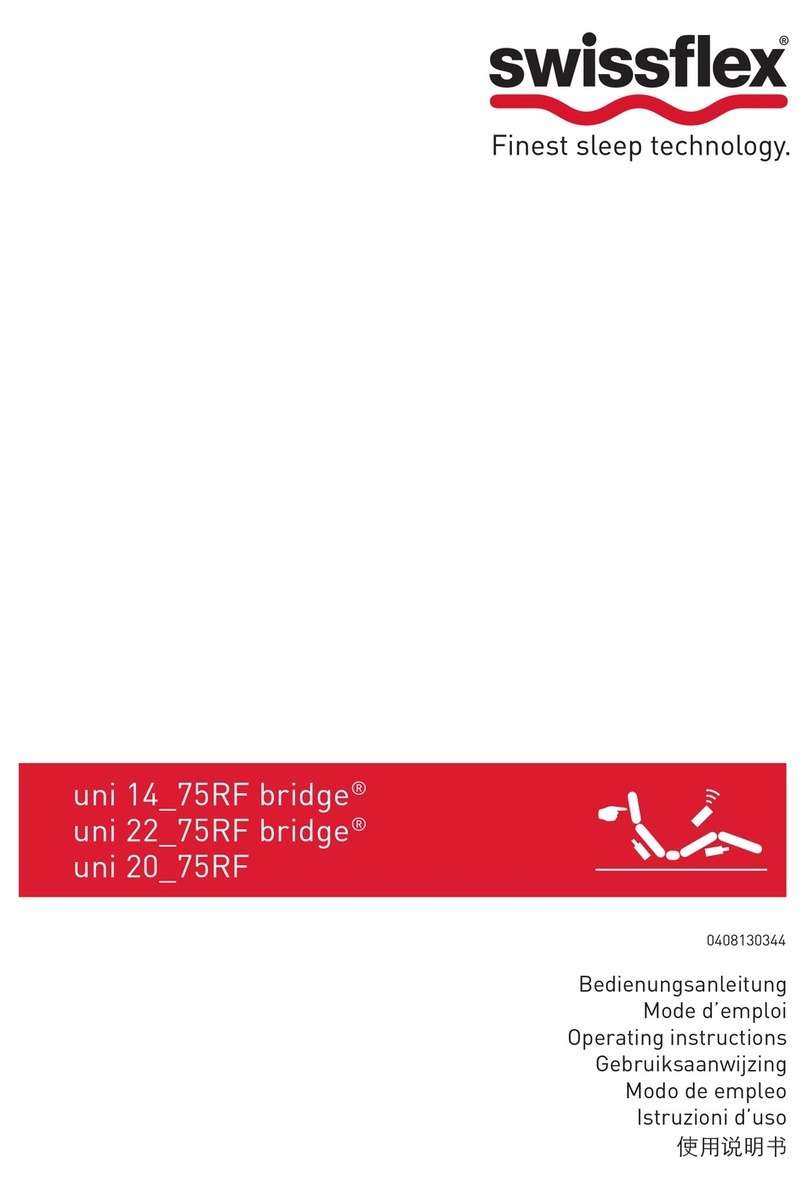
swissflex
swissflex uni 14_75RF bridge operating instructions
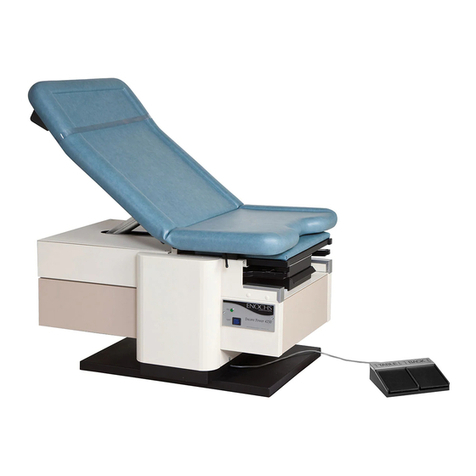
ENOCHS
ENOCHS Encore Power 4250 Installation & operation manual
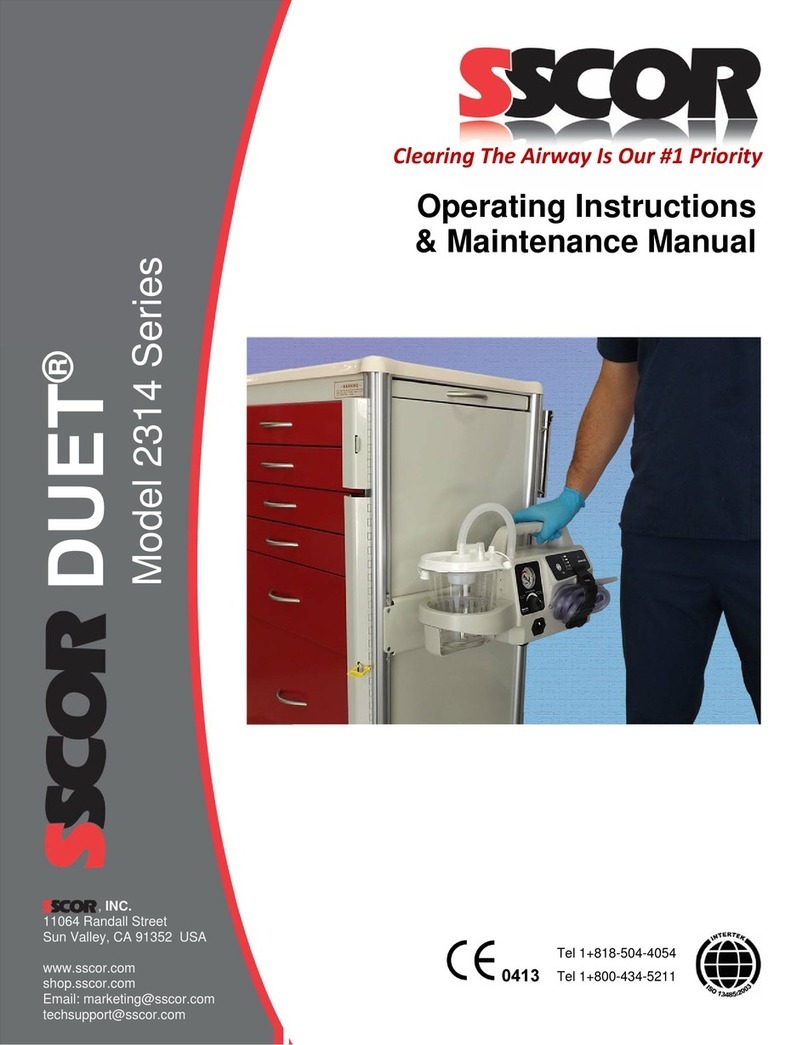
SSCOR Duet
SSCOR Duet 2314 series Operating Instructions & Maintenance Manual
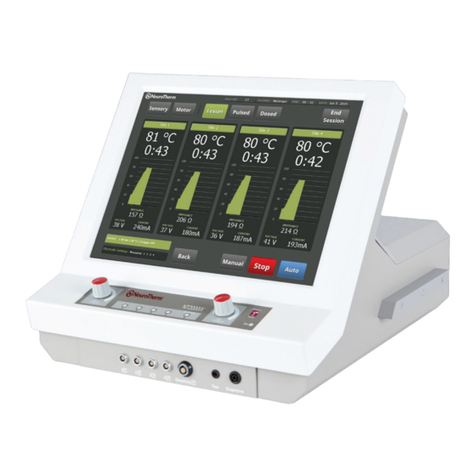
Abbott
Abbott NT000iX quick start guide


